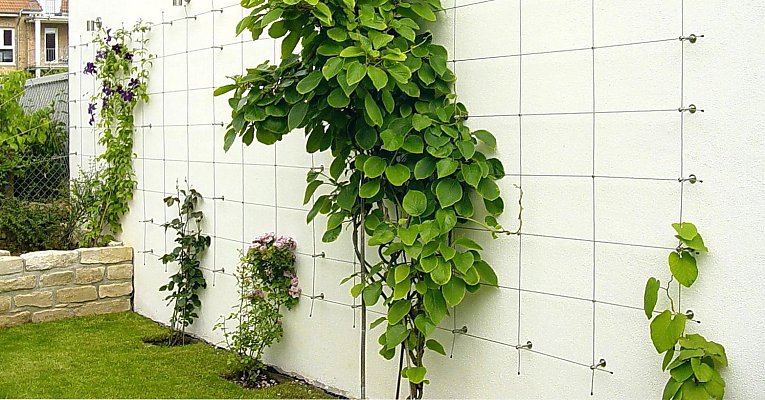Wire Rope Trellis Systems (Stainless Steel)
If you already have an idea in mind for growing a climbing plant on a wall or the front of your home, you've come to the right place! Nearly all climbing plants need a support system of some kind. Even 'self climbing' plants will usually benefit from or may even require additional support. While FassadenGrün specialises in wall-bound trellis systems made of stainless steel tension cables, individual parts and wires for freestanding ('row') trellises are also available. You can choose from our complete prefabricated wire rope trellis systems in various versions ('construction styles'), or design your own trellis by selecting individual parts. We offer you information about other providers and any possible challenges you may encounter. As an alternative to cable trellises, lattice trellises made of wood, metal, and bamboo are also available here!











